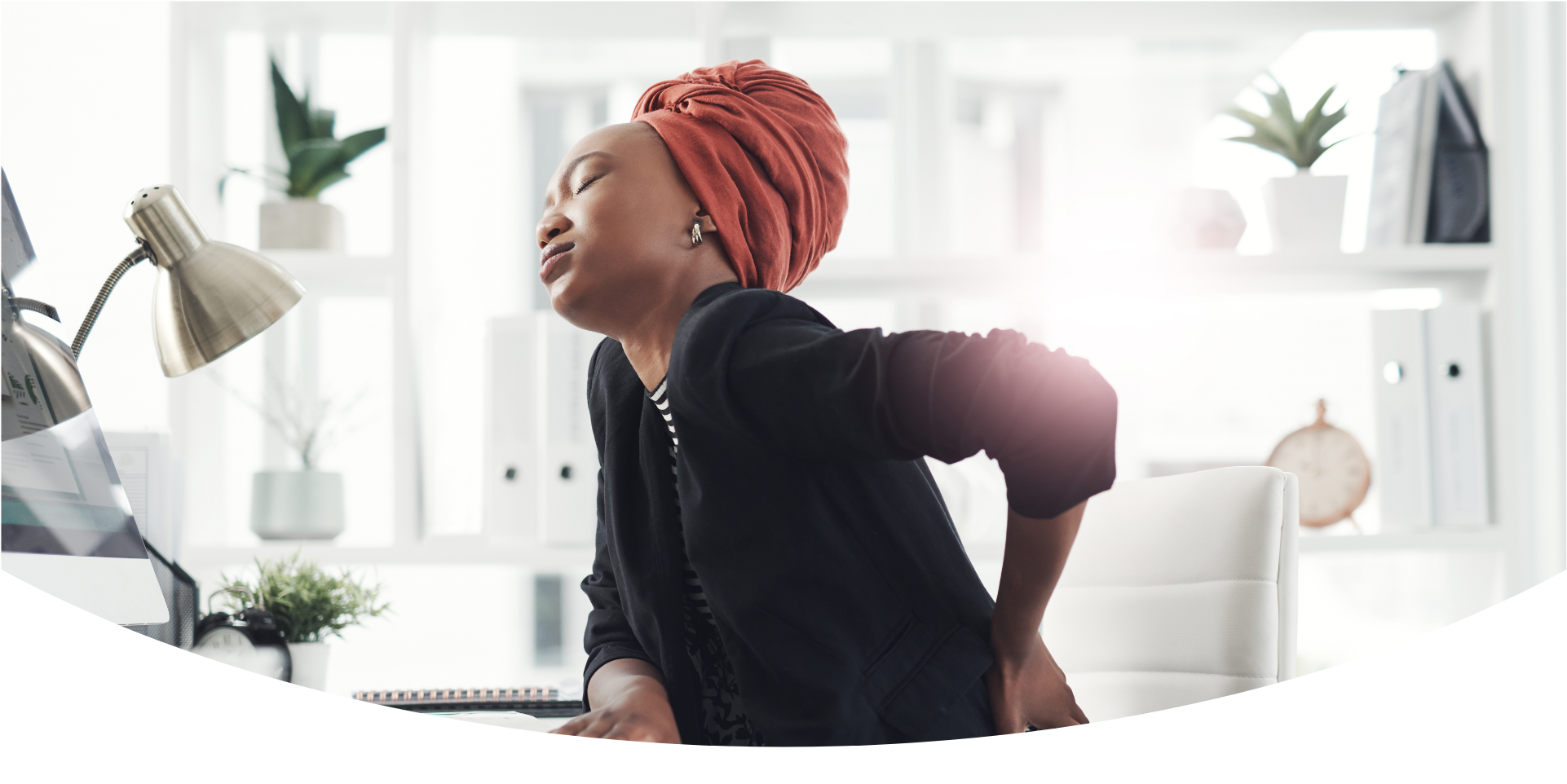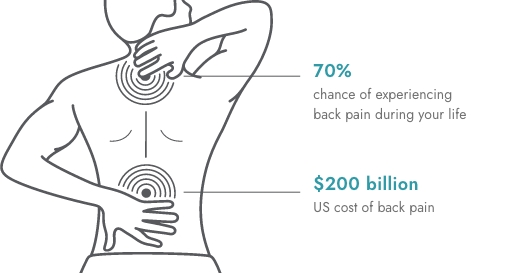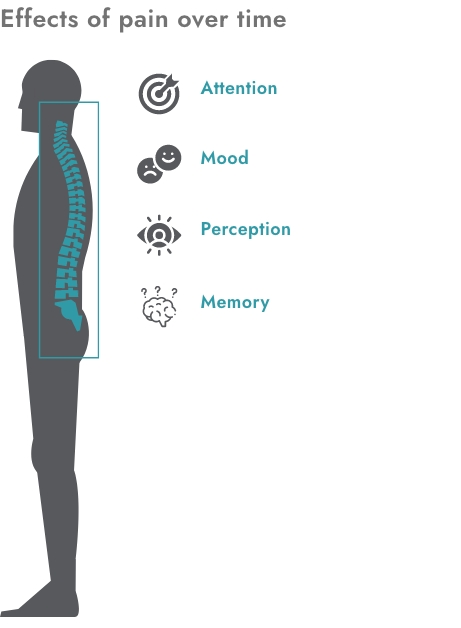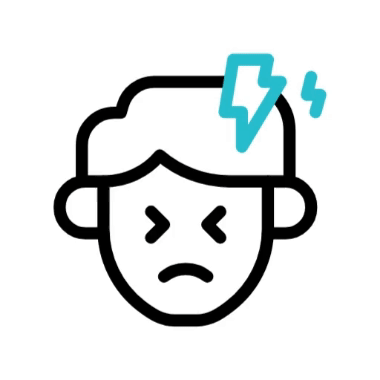
Back Pain
Back pain is the leading cause of disability in the world affecting movement, performance at work, engagement at home and general well-being1. You have a 70% chance of having at least one episode of back pain during your life and although it’s more common in adults its incidence in children is rising. In the US the cost of back pain is estimated to be $200 billion a year.
Back pain can range from a mild ache that might come and go to a constant searing nerve pain. In some cases it might cause you mild discomfort and in others it can be completely debilitating. Whichever flavour of back pain is affecting you it’s a good idea to find a solution. Beyond the actual pain there are severe issues that can develop including permanent degeneration, depression, anxiety, sleep disturbances, altered movement patterns, impaired decision making and long term behavioural issues2. The effects of pain over time can even affect the structure of your brain, shrinking certain areas involved with attention, mood, perception and memory3. Having some form of pain will also sensitise you to other forms of pain.


Finding the cause of back pain
A look at the anatomy of your lower back will show how complex back pain can be. Bones, joints, ligaments, tendons, nerves, fascia, discs, blood vessels and even organs can contribute to lower back pain. Uncomplicated lower back pain (where the pain is isolated to the back or buttock area) is often seen as muscular while pain going down the leg (often call sciatica) is seen as involving nerve. The truth is that it is incredibly hard to locate the exact source of pain, even with MRI, and the good news is that you don’t have to.
What we now realise is that the painful area is usually not the source of the problem. In the vast majority of cases the area we are feeling the pain is where the body is compensating for some other problem. A good example of this is if you had a leak in your roof (real problem) that created a puddle on the floor (compensation). The puddle would probably be the thing you notice first. If you mopped it up it would most likely come back, again and again, cause a lot of frustration until you got to find and fix the leak in the roof.
While pain killers, lotions, massages, pain modulating devices and even surgery might be able to numb the pain temporarily they will not be able to address the underlying cause and will only force the body to set up other compensation patterns that will cause damage elsewhere.
Because the cause of headaches and migraines could lie in areas of the body other than the head, a solution lies in looking at what is happening in the whole body and not just at the site of pain. A very useful way to do this is to assess body function and posture to analyse how your body is holding itself upright. This gives you a window into your spine and nervous system so a person trained in postural analyses can determine where the source might be.
Posture
A solution lies in looking at what is happening in the whole body and not just at the site of pain. A very useful way to do this is to assess posture and analyse how your body is holding itself upright. This gives you a window into your spine and nervous system so a person trained in postural analyses can determine where the source might be.
Armed with that information you can now find a professional who can help by working with your body to correct those things that the body can’t and to change your lifestyle to help your body improve the things that it can. Lifestyle changes might begin with changes in how you sit, sleep and stand and move onto corrective exercises as you are ready. Chiropractic has been repeatedly shown to be very effective for back pain of various sorts and could help you4.
At Peak Chiropractic we are trained to thoroughly assess your body with postural analysis, functional testing, onsite digital X-rays (if necessary) and help to create a plan to relieve your pain, correct the underlying problem and get you back to your best. We are also able to work with your body to correct things that your body cannot and to counsel you in what you can do to help your body heal more effectively. To find out how we can help please call 021 671 3303.
References
1. Hoy D, March L, Brooks P, Blyth F, Woolf A. The global burden of low back pain: estimates from the Global Burden of Disease 2010 study. Annals of the Rheutamatic Diseases. 2014;73(6):968–974.
2. Baliki MN, Geha PY, Apkarian AV, Chialvo DR. Beyond feeling: chronic pain hurts the brain, disrupting the default-mode network dynamics. J Neurosci. 2008;28(6):1398–1403.
3. Smallwood RF, Laird AR, Ramage AE, et al. Structural brain anomalies and chronic pain: a quantitative meta-analysis of gray matter volume. J Pain. 2013;14(7):663–675.
4. Clar C, Tsertsvadze A, Court R, Hundt GL, Clarke A, Sutcliffe P. Clinical effectiveness of manual therapy for the management of musculoskeletal and non-musculoskeletal conditions: systematic review and update of UK evidence report. Chiropr Man Therap. 2014;22(1):12







